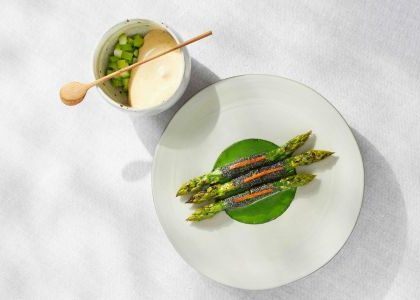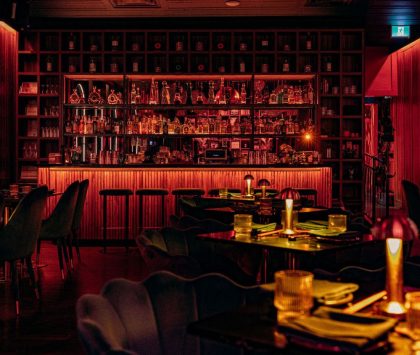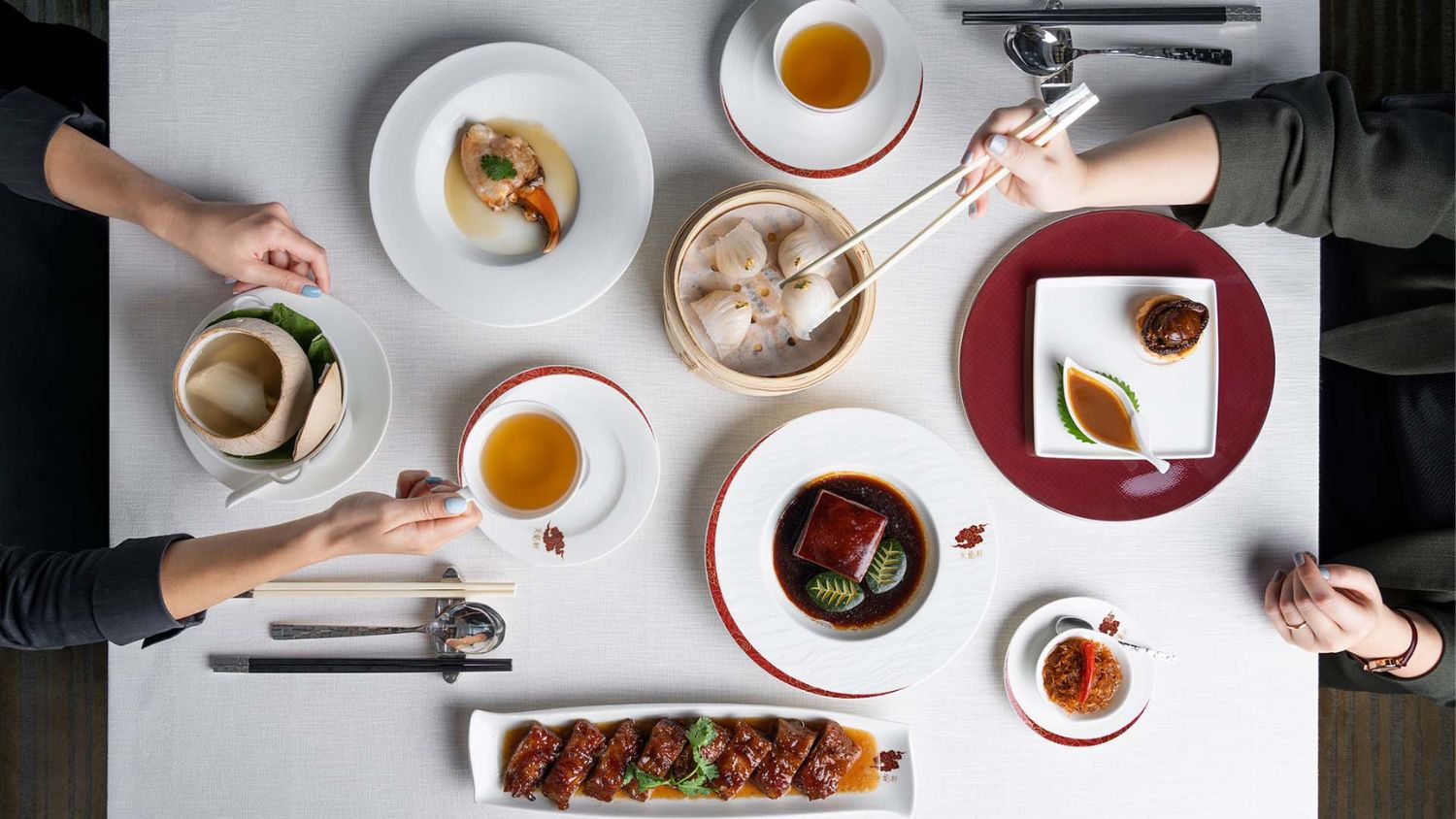
Historically, our biggest meal used to be consumed right smack in the middle of the day. Due to various logistical constraints — no electricity, laborious farm work — it only made sense to fuel up midday. But as I dig into my four-course Michelin-starred Cantonese lunch at Tin Lung Heen at the Ritz Carlton Hong Kong, I note the only constraint facing me today will be the inability to nap. Hong Kong is finally ready to welcome visitors post-pandemic and, now that 77,000 or so food establishments have reopened, there’s no time to rest. I put my nose to the grindstone or, in this case, a glass of wine.

Tin Lung Heen signature dish “honey-glazed Iberian pork char siu”
Although the Chateau de Lugey Blanc des Cabanes 2020 tastes of lemon and exotic fruit, its hint of minerality (and seashells literally stuck on the outside of the bottle) reveals it’s been aged on an oyster bed at the bottom of the sea in France’s Bassin d’Arcachon. It pairs well with chef Paul Lau’s baked French chicken in green onion and ginger sautéed conch and I marvel at the creativity of this restaurant on the 102nd floor of the highest hotel in the city that has managed to retain its two Michelin stars for 11 consecutive years.
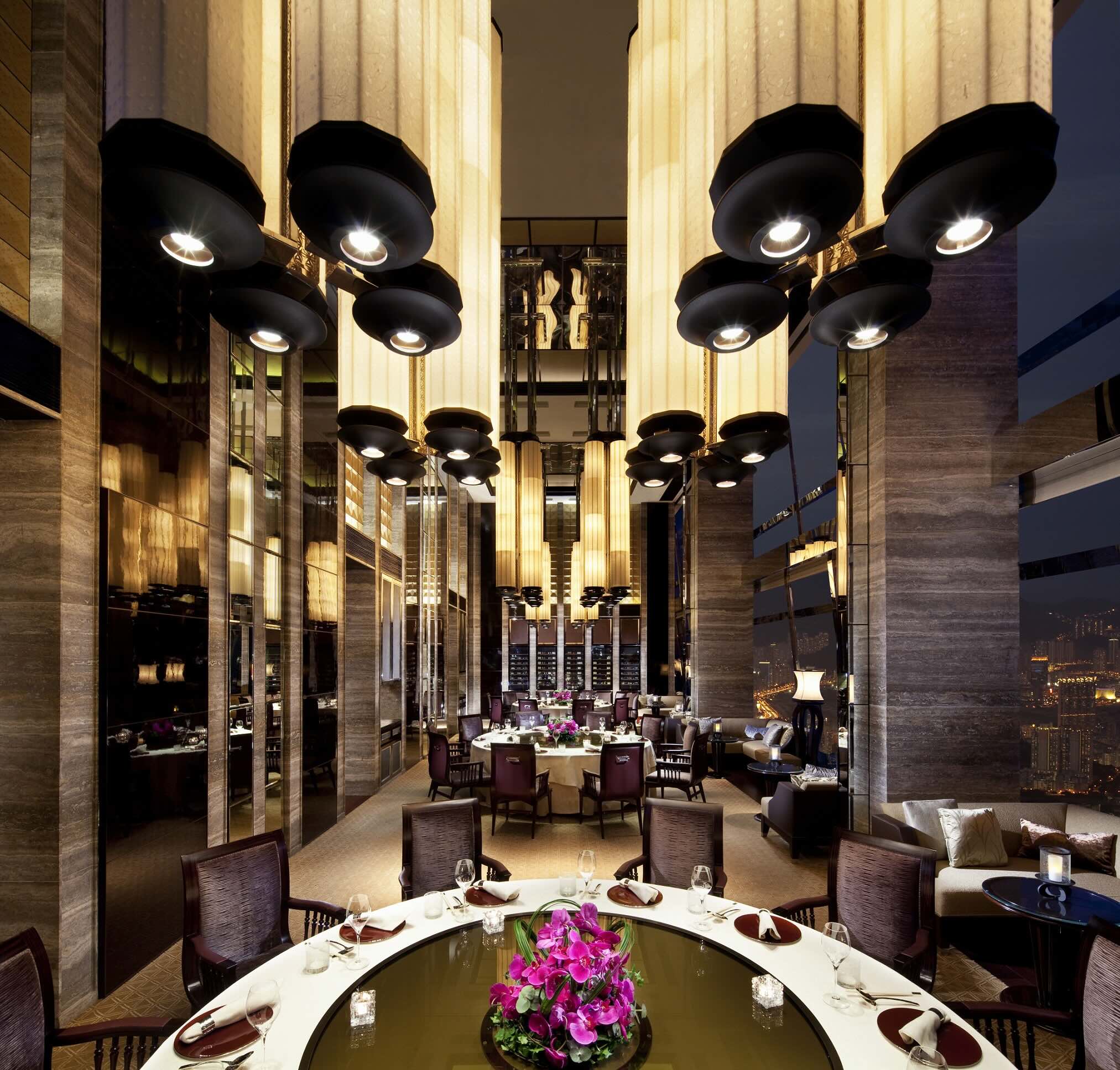
Tin Lung Heen Private Dining Room
With more than seven million people in a compact 1,100 square kilometres (that’s 7,000 people per kilometre while Canada, for comparison, musters just 4), restaurant competition is fierce. A full 75 spots took home Michelin stars in 2023 and that doesn’t include 26 budget-friendly street food options that also got a famed nod.
The city’s gastronomic ascendency has been relatively short in terms of its own history. When the lush, green island and 262 nearby smaller, mostly uninhabited isles came under Chinese rule during the Qin Dynasty in the third century B.C., it remained part of the Chinese Empire for the next two thousand years as a thriving farming village, free port and commerce hub. It wasn’t until the region was ceded to the British Empire in 1842 to end the Opium Wars that a type of fusion cuisine took hold with Chinese, British and southeast Asian flavours mingling together.
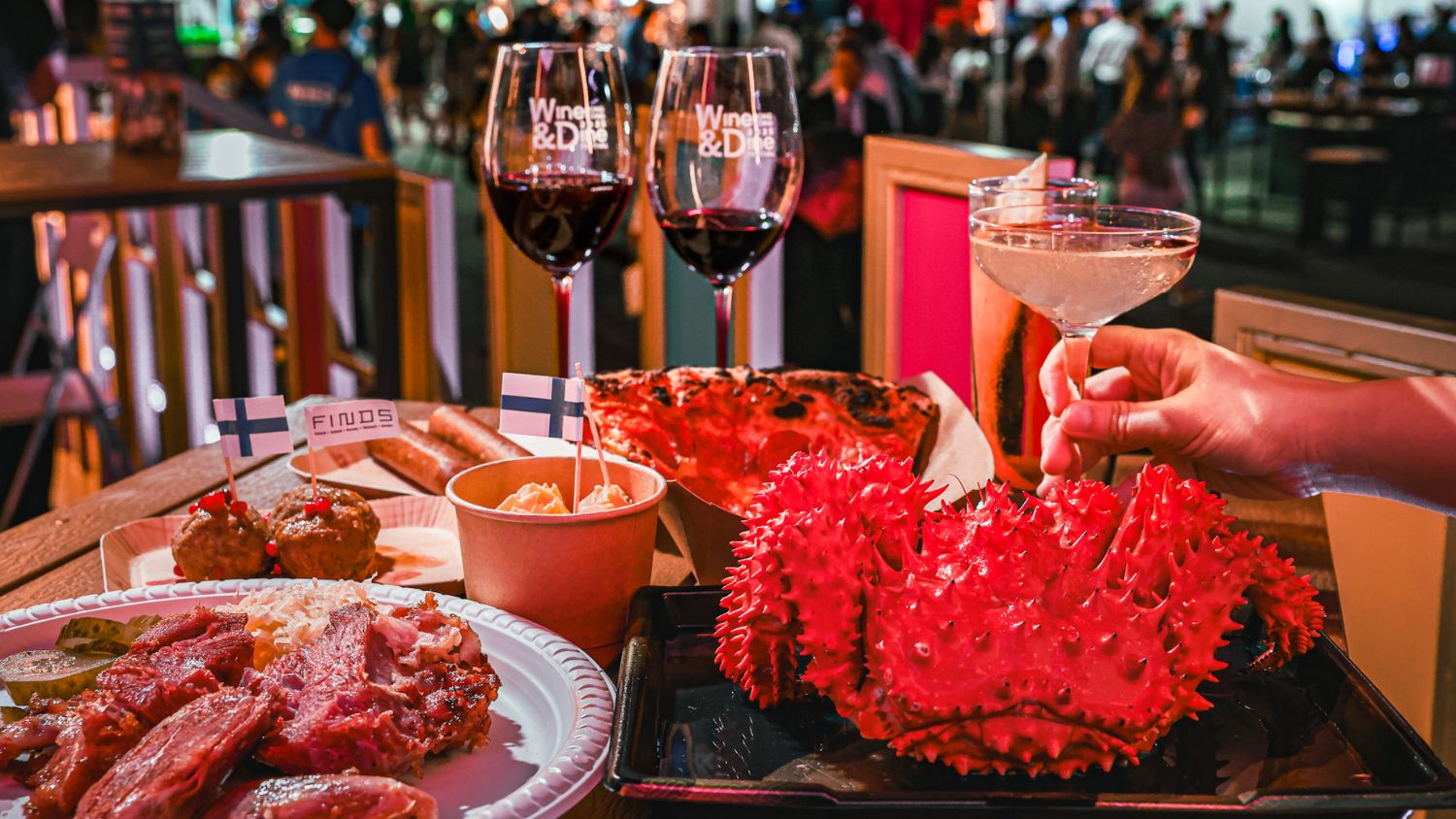
Hong Kong Food Festival
But sifting through 77,000 establishments can be a bit Herculean, so the Hong Kong Wine & Dine Festival is the perfect shortcut to harnessing the city’s culinary prowess. After a five-year hiatus, the four-day festival returned in October to Central Harbourfront with more than 300 booths highlighting wines from 36 countries (from classic French vintages to a festival-first spotlight on Chinese wine like Chateau Mihope from Ningxia), cocktails, street food and Michelin fare – including the Ritz’s Tin Lung Heen.
Making my way through the throngs of foodies, I head for Sachi, the world’s first soy wine made with soy bean curd whey from Singapore. Crafted from non-GMO soybeans from Canada and the U.S., this alcoholic novelty could be a game-changer – it’s better for the environment (it reuses tofu production wastewater) and more nutritious at only 70 calories per 100 ml. It tastes light and floral with a hint of sweetness – like a Moscato – but it’s only got 5.8% alcohol, which means it won’t be a late night.
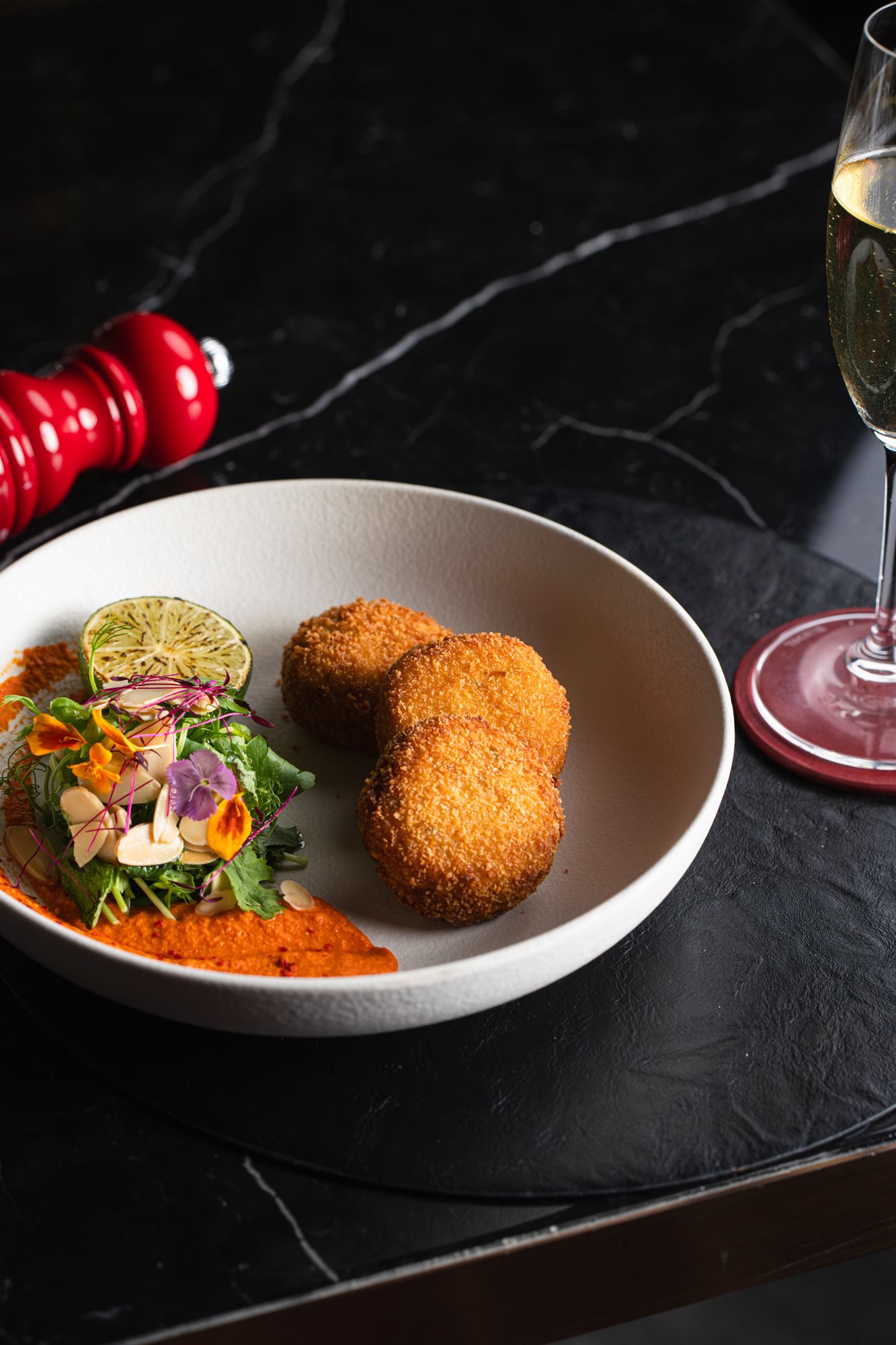
Photo: The Tai Pan
Which is good news because Hong Kongers tend to be early risers so, after a full western and Chinese breakfast at the Murray Hotel’s Tai Pan restaurant (eggs benny but with pan-fried turnip cake), I’m keen to see M+, Asia’s first global museum of contemporary visual culture. Literally plunked on top of reclaimed land carved out of the sea, the newly built West Kowloon Cultural District’s M+ was designed by architects Herzog & de Meuron and opened during the pandemic with 33 galleries featuring collections, exhibitions and interpretations of visual art, design and architecture. “In here, things can be put on an equal plane like a rice cooker next to a painting so you’re not dealing with the hierarchies of art,” says the lead curator, Canadian Keri Ryan, who came to the museum after a seven-year stint with the Art Gallery of Ontario.
And now, I’ve now got rice on my mind. Upstairs at Mosu, next to M+’s rooftop garden, the Korean rice comes courtesy of chef Sung Anh who cut his teeth in kitchens like the French Laundry before opening his three-Michelin-starred spot, Mosu Seoul. The highlight of lunch at Mosu M+ is the Hanwoo Cast Iron Pot Rice, a dish that pays homage to traditional Korean cooking as it’s prepared in a cast-iron pot using three different rice varieties.
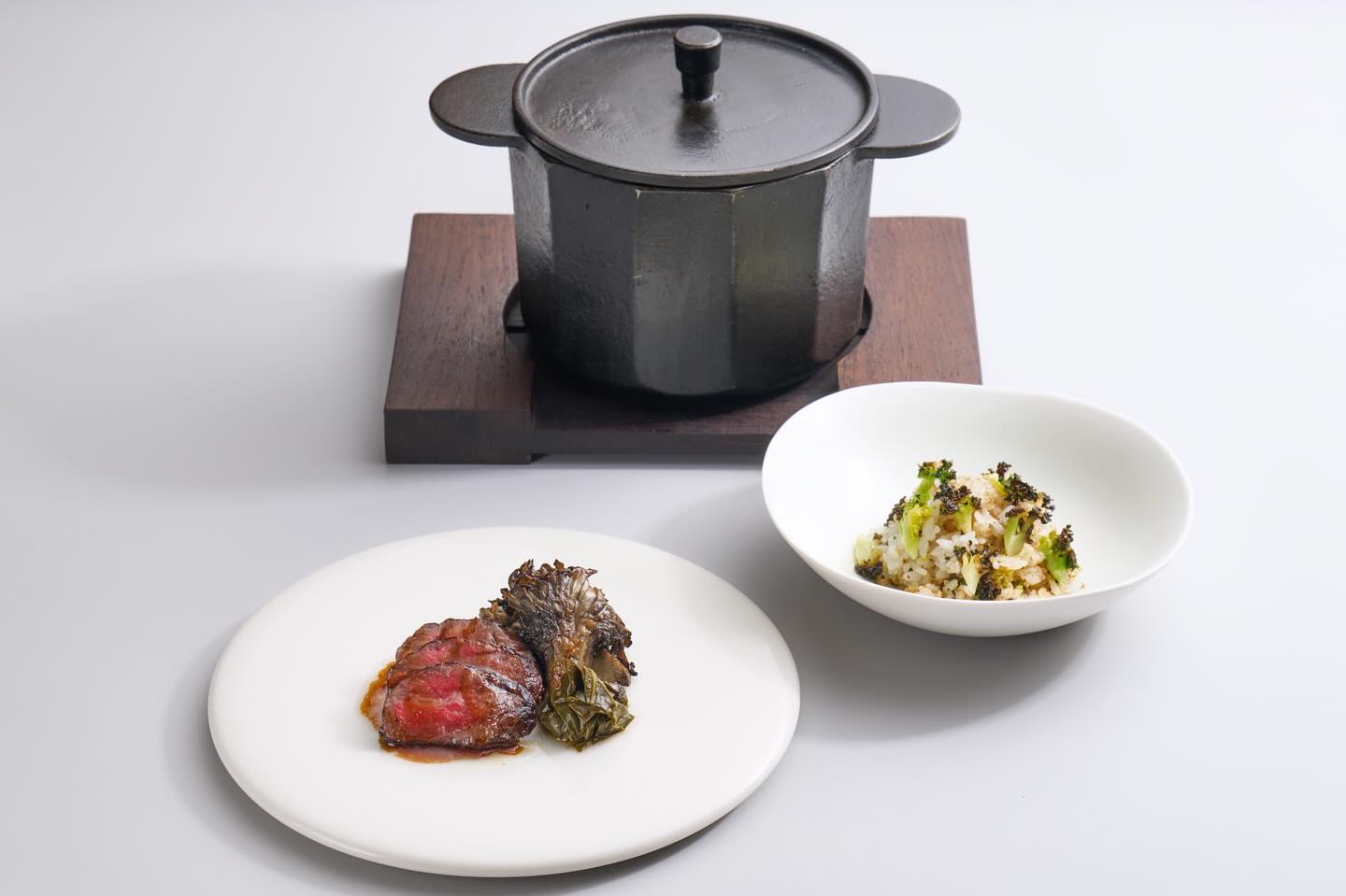
The Hanwoo Cast Iron Pot Rice. This dish pays homage to the rich culinary history of Korea, where the traditional method of cooking rice in a cast-iron pot over an open fire holds a special place. Photo: Mosu Hong Kong
Later, the simplicity of Hong Kong’s elevated essentials is on full display on our food tour that begins at the reimagined Central Market. Our retired 70-year-old guide, Thomas, is the former COO of Hong Kong ING, but now leads the carb-curious and hungry through the floors of this grade three historic Bauhaus building, which has been converted into a 11,330-square-metre destination space housing eclectic dining, shopping and entertainment. Both restaurants and street food are on offer hawking everything from a kaleidoscopic range of fresh produce to late-night snacks like spicy fish balls, a Hong Kong staple everywhere (most are heavy on flour, not so much on the fish).
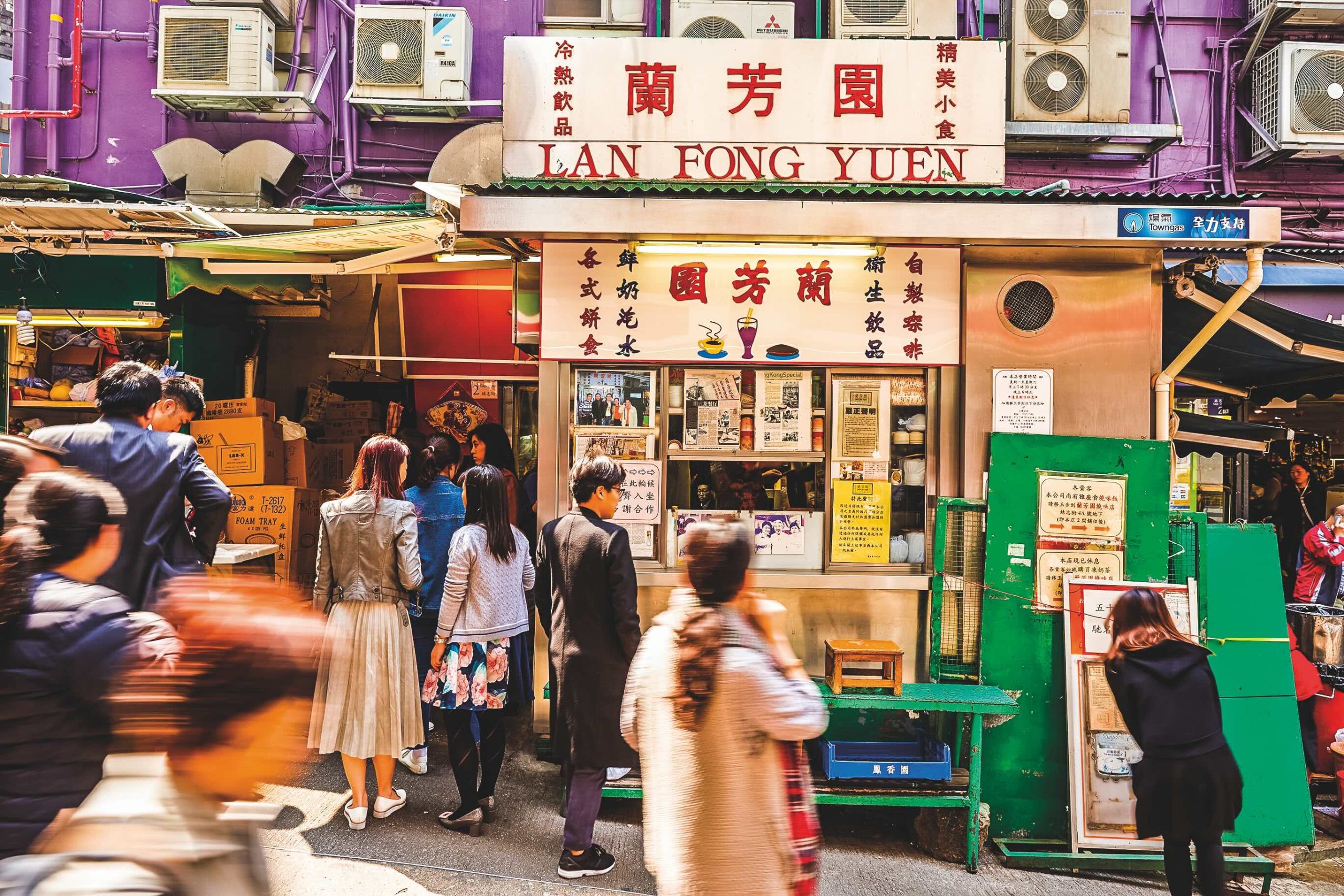
Lang Fong Yuen Market. Photo: HKTB
For a more traditional, dai pai dong, or traditional open-air food stall, we head to the 70 year old Lan Fong Yuen. Originally opened in 1952 and now operating out of a building, this classic eatery keeps tourists coming to its original green stall advertising its famed silk stocking milk tea. According to Thomas, this “pantyhose tea” is Hong Kong’s version of India’s chai tea, a sweet beverage that originated when the British brought over their afternoon tea drinking culture, but not their abundant cows. Without fresh milk readily available, evaporated milk solved the issue and now this sweet tea is so abundant that pantyhose are sold in every corner convenience store. Lan Fong Yuen claims to be the first to have served the popular drink, but it doesn’t really matter at this point because I know I’ll find a million other places – or 77,000 to be exact – serving equally as exquisite fare. www.discoverhongkong.com

